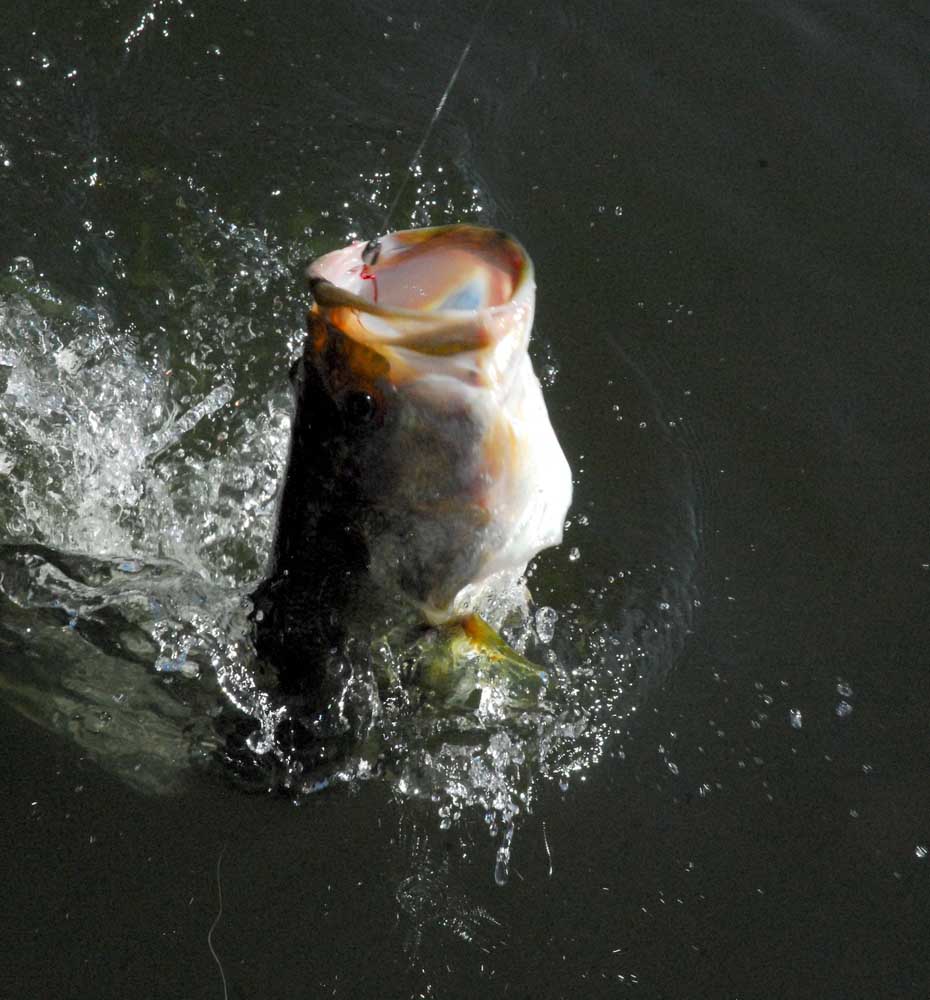Learning about bass helps make better fishermen
Published 10:56 pm Thursday, March 7, 2019

- Today’s bass fishermen have access to more information than ever, but there are still some misconceptions about the biology of fish. (Steve Knight/Staff)
There is no doubt fishermen today are more educated about their sport than generations before them. With the access to information, you cannot help but learn.
I was recently talking to a high school-aged fisherman who knew more technical information about his gear than I ever did. What he did not know was anything about the fish he was trying to catch.
Trending
That is not unusual. There are times I hear conversations where I know the information is based on something someone heard around the tackle shop or marina and based more on the good-old-boy talk than fact.
That happened on the same trip when I heard someone ask about a bass that they had caught that had a relatively small mouth compared to the fish’s weight. Another fisherman told them that meant it definitely had to be a female.
I had heard that theory before and wanted to comment, but decided not. Instead, I asked Texas Parks and Wildlife Department Inland Fisheries Regional Director Spencer Dumont if it is possible to determine a bass’s sex by looking at it. His answer came in one word, “No.”
Of course being a biologist Dumont had a more scientific answer that basically said the only sure way to tell if a bass is a female is to watch it drop its eggs.
“Angle and depth of urogenital probe is the single most accurate method,” Dumont explained, adding that is only 90 percent accurate. “Sexing by just looking at the shape of the urogenital opening is a 50/50 deal at best in the spring during spawning. Other times of year it is much less accurate.”
Speaking of looks, there is not a lot you can tell about a bass just by looking at it beyond that it is a largemouth bass. There are no coloring or gill pattern markings that distinguish a Florida strain bass from a native bass. The vast majority of the bass found in Texas lakes are crosses of the two anyway.
Trending
Another question that comes up among fishermen is the impact of stocking Florida strain bass into a reservoir. For example, what happens when a lake is stocked with Florida bass a few times and then the stocking is stopped?
“The average proportion of Florida bass genetics in a population will stabilize with minor variation at a level set by the conditions and location of the reservoir,” Dumont said.
The biologist added that like livestock after an initial cross and then several generations of breeding the bass will eventually revert to genetically being predominately one breed or the other. In the case of bass, which genetic tract the generations take helps determine the potential for becoming big bass.
“Obviously if most of the bass in a population have very high Florida influence, the potential for big bass is better. But habitat, forage, fishing pressure, harvest, water levels, water quality, reservoir size, harvest regulation, and many other factors ultimately determine big bass potential in a given water body,” Dumont said.
That leads to a belief biologists are often confronted with and that is that without constant restocking, a lake will not be able to produce trophy-sized bass or in some cases simply numbers of bass.
“It comes up over and over again. Bass anglers have the misguided perception that fishing can only be good if bass are stocked. I guess they forget about fishing the spawn,” Dumont said.
Under normal circumstances, a lake’s existing population reproduces more than enough young each year to more than maintain a population even considering predation and other factors. Dumont said the only time stocking increases numbers is following an extended drought where a lake goes nearly dry or after a dieoff caused by something like golden alga. Then the department restocks with the purpose of jumpstarting a population.
“The primary purpose of stocking Florida bass is to enhance production of large fish by maintaining Florida genetics. Stocking will not increase numbers of bass in a reservoir with an established bass population. Natural reproduction is far superior to any realistic stocking we could ever do,” Dumont said.
The key to good numbers always returns to habitat, water quality, regulations and fishing pressure.
In Texas, where water conditions are mostly right for Florida bass, TPWD’s stockings through the years have pushed Florida genetics about as far as they can go. The department continues to monitor Florida genetics in lakes and restocks if percentages drop.
The agency also continues to try and push the genetics envelope, hoping Toyota ShareLunker offspring add that little something that results in even bigger bass. The key is getting fishermen to continue to participate in the ShareLunker and maybe one of the entries will hold that special genetic key.
“Success of SL stockings will be based on some of these stocked fish growing up to be giants. Our focus will be maximizing survival of these stocked fish, and how exactly that happens is yet to be determined,” Dumont said.



